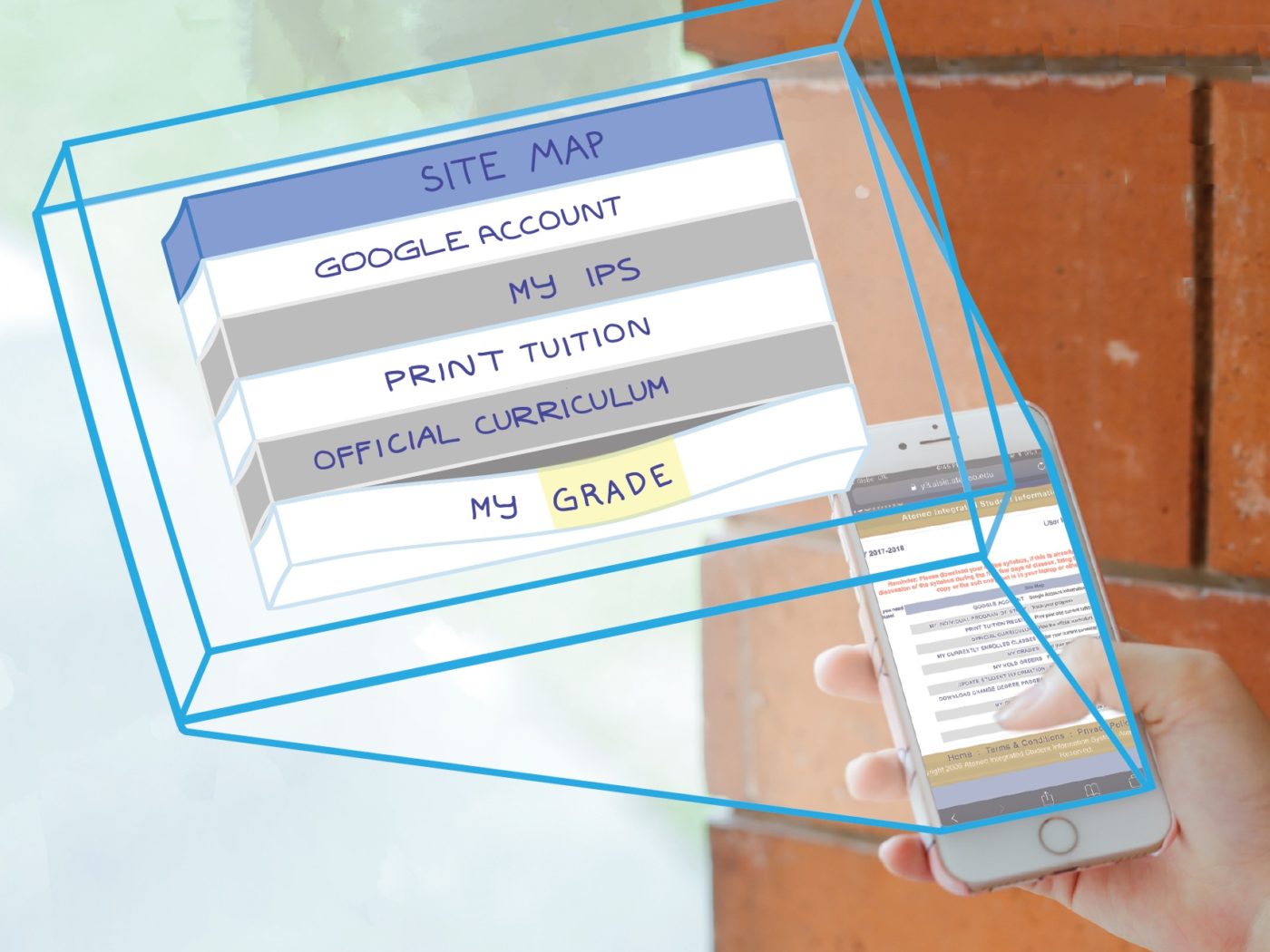In a room full of anxious students, the pitter-patter of keystrokes fills the air. With their eyes glued to their computer screens, each student nervously awaits their turn. After taking great pains to plan their class schedules, the time to enlist for the semester draws ever closer. Finally, the clock’s hour hand strikes nine, and “the hunger games” for the ideal class schedule begins.
Every semester, thousands of students undergo enlistment through the Ateneo Integrated Student Information System (AISIS). In homes and in college campuses, the internet has allowed for information to flow ever more freely. As such, disciplines such as User Experience (UX) design have emerged in recent years, with the goal of optimizing user interactions with products and services such as AISIS.
Behind the screens
Often associated with software engineers and programmers, the words “UX design” remains foreign to most ears. The discipline, however, is not at all confined to the realm of technology.
Some in the Ateneo have been spreading awareness about UX design. “Educating the next generation of design leaders is so important,” says Alexis Collado, co-founder of the User Experience Society (UXSoc) and a management information systems senior. The organization “champions” well-implemented user experiences, and caters to those interested in design, web, or mobile development.
For people who create and maintain websites, UX is more than just a consideration; it is a central concern. “User experience involves all of your experiences with the product or service, from start to end,” Collado explains.
Believing that “Ateneans deserve better,” Miguel Galace, a computer science senior, drew up a redesign of AISIS, which is just one of the many ways that designers can improve websites. AISIS was first launched in 2005, yet its basic design has not been updated for years.
“When I see something nice, it gives me this rush,” Galace says. “I have the opposite feeling for AISIS.”
Galace revamped the website so that it adheres to responsive design, an approach which reflows content based on how big the user’s screen is. This allows the user to “take advantage of the full experience,” whether they are using a phone or a desktop.
The redesign is notably less cluttered than the present AISIS website. “When we’re talking about a site like this, the main focus is content. The problem I saw was that there was too much information,” Galace says of the site’s home page.
“It’s distracting, and it detracts from the experience. What I did was [that I stripped away] all of the unnecessary information, and [I] just presented what [the user needed.]”
Even so, the present AISIS website is not entirely devoid of advantages. “All of the information is there,” Galace says. “It’s just not presented well.” When asked if it had its own plans to revamp AISIS, the Office of the Registrar opted not to comment.
Editing an experience
This whole ordeal makes it clear that UX design encompasses more than just technological fields. Poor design can lead to pressing consequences: A simple misclick in AISIS can very well put a student’s semester in jeopardy. Yet, a lacking awareness of UX design can also put at risk sensitive knowledge— such as banking information and government documents— which also flows through digital interfaces today.
“There [is so much more] involved in designing a user experience,” Collado says, citing marketing, branding, and copywriting, as some of the non-technological, but crucial factors involved in designing UX.
Tata Yap, a lecturer from the Department of Fine Arts, agrees. “[User experience is] a field of study that is inherently interdisciplinary…[It] requires both a qualitative and quantitative perspective,” she says.
A crucial part of the user experience is user interface (UI) design, which Collado says is “more of problem solving on a visual side.” He clarifies that UX is the “overarching umbrella, while user interface is what you see.”
A website’s ability to adapt to whatever device it is being viewed from is critical to creating an excellent experience for the user. The rise of smartphones and tablets has made responsive web design almost mandatory. AISIS, however, still lags behind most websites in this field. Accessing the AISIS website from a phone opens the same exact website one sees on a computer.
Although AISIS still has not caught up with the recent explosion of mobile devices, other applications have started taking advantage of this new playing field. Snapchat’s user experience has recently been put to the test with the emergence of Instagram stories. As of June 2017, Instagram stories reportedly had 250 million daily users as opposed to Snapchat’s 166 million. A study has also found that popular social media influencers have been using Instagram stories more and more, while posting significantly less on Snapchat.
“Snapchat’s user experience requires a certain sophistication in interacting with the controls,” says Yap. She attributes this shift away from Snapchat to its daunting interface that possibly “alienated many older users.” Yap adds that, “all Instagram had to do was copy many of Snapchat’s main features, but improve the usability and universality of the controls.”
Awareness is key
A lack of organizations catering to those passionate about design led Collado to establish UXSoc. Since then, the organization has been able to raise people’s awareness of UX.
Something that the organization has been trying to accomplish is to break the assumption that the process of design is only confined to a few. “One person is not responsible for the whole entirety of the user experience,” says Collado.
He mentions that designers, writers, and even those on a project’s legal team all play an integral part in the making of user experience. “In reality, everyone is a designer. This is what we want for people to realize,” he adds.
Despite the organization’s many strides towards developing UX, Collado still thinks that design in the Philippines is not on par with that of more developed nations. Collado argues that “majority of the Philippines is in a designer-centric mind,” wherein the designers’ wants are put above the user’s need. He believes it is vital that designers communicate with their users. “If you can’t consult your user, you might not be building the right thing,” he explains.
Collado also mentions, however, that designers cannot just implement whatever the user wants. “Design is about trade-offs,” he says, clarifying that designers must factor in the resources at their disposal, before applying any changes to their design.
Still, user involvement in the design process is something both student designers can get behind. Whenever he works on a project, Galace shares that the first thing he does is “to talk with people who have stakes—people who are actually gonna end up using it.”
In the end, the call for mainstream awareness of UX design will only continue to grow in intensity. “[Designers] don’t have all of the answers on how to design something better,” says Galace. It is up to the regular user—those who undergo these experiences, yet have never written a line of code—to let their needs be known.
“When you think about it, UX isn’t just about digital things. It’s really concerned with all of your interactions, all of the emotions that you feel, all of the parts and pieces of the experience that culminate towards something you want to accomplish,” Collado laments.
“It’s all about that, and I don’t think we’re there yet.”
What do you think about this story? Send your comments and suggestions here: tgdn.co/2ZqqodZ







